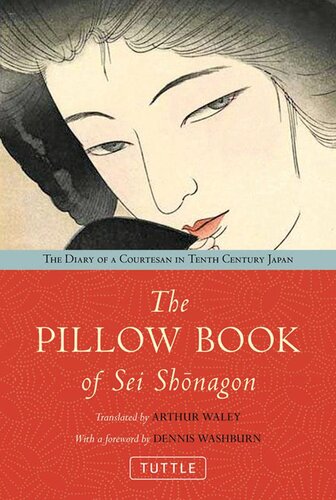

Most ebook files are in PDF format, so you can easily read them using various software such as Foxit Reader or directly on the Google Chrome browser.
Some ebook files are released by publishers in other formats such as .awz, .mobi, .epub, .fb2, etc. You may need to install specific software to read these formats on mobile/PC, such as Calibre.
Please read the tutorial at this link: https://ebookbell.com/faq
We offer FREE conversion to the popular formats you request; however, this may take some time. Therefore, right after payment, please email us, and we will try to provide the service as quickly as possible.
For some exceptional file formats or broken links (if any), please refrain from opening any disputes. Instead, email us first, and we will try to assist within a maximum of 6 hours.
EbookBell Team

4.4
22 reviewsJapan in the 10th century stood physically & culturally isolated from the rest of the world. Inside this bubble, a subtle & beautiful world was in operation, & its inhabitants were tied to the moment, having no interest in the future & disdain for the past.
The Pillow Book of Sei Shonagon was a product of a tenth-century courtier's experiences in the palace of Empress Teishi. A common custom of the time period, courtiers used to keep notes or a diary in a wooden pillow with a drawer. This "pillow book" reflects the confident aesthetic judgments of Shonagon & her ability to create prose that crossed into the realm of the poetic. The Pillow Book of Sei Shonagon is one of the earliest examples of diary literature whose passages chronicle the events of the court calendar, the ceremonies & celebrations specific to Teishi's court, & the vignettes that provide brilliantly drawn glimpses into the manners & foibles of the aristocracy.
A contemporary of Murasaki Shikibu, the author of The Tale of Genji , this small diary brings an added dimension to Murasaki's timeless & seminal work.
Arthur Waley's elegant translation of The Pillow Book of Sei Shonagon captures the beauty of its prose & the vitality of Shonagon's narrative voice, as well as her quirky personality traits. In a place & time where poetry was as important as knowledge & beauty was highly revered, Sei Shonagon's private writings give the reader a charming & intimate glimpse into a time of isolated innocence & pale beauty.
About the Author:Arthur Waley (1889-1966) taught himself Chinese & Japanese after being appointed Assistant Keeper of Oriental Prints & Manuscripts at the British Museum. He was one of the most respected translators of Asian classics into English of his time, with his translated works including The Tale of Genji, Monkey (The Journey to the West), The Noh Plays of Japan & The Analects of Confucius.